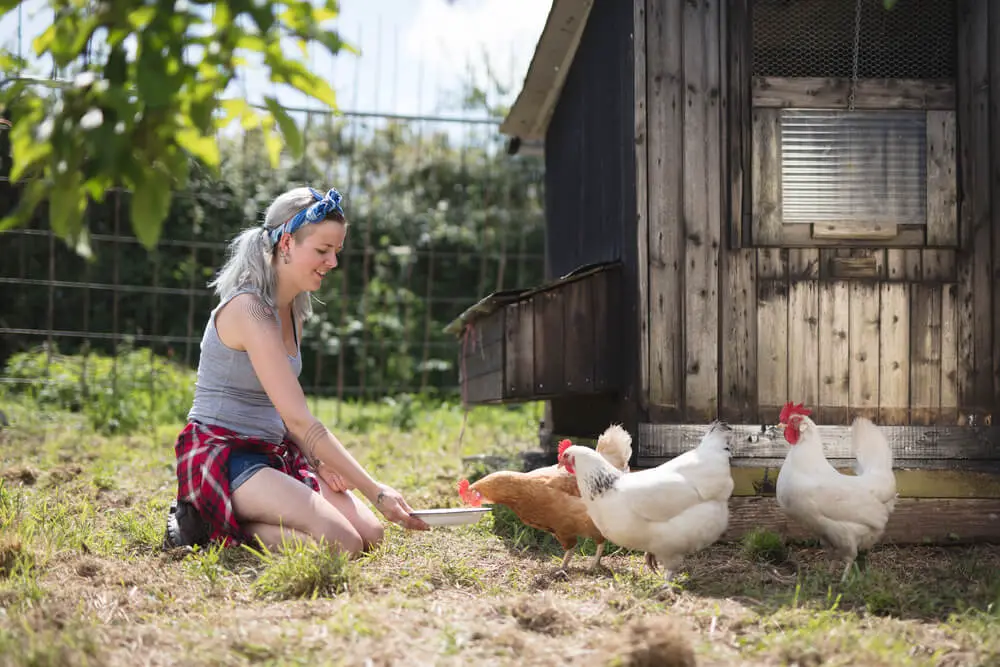As winter sets in, it’s essential to ensure your chickens are comfortable and healthy in their coop. One critical aspect of winter care for chickens is choosing the right bedding material. Proper bedding can help keep your flock warm, dry, and healthy during the cold months.
At typesofchicken.com, we’ve conducted extensive research and testing to find the best bedding materials for chicken coops in winter. In this article, we’ll share our findings and recommendations to help you keep your chickens cozy and happy throughout the winter season.
Why Is Bedding Important for Chicken Coops in Winter?
During winter, chickens need an insulated and dry environment to maintain their body heat and prevent frostbite. Bedding helps absorb moisture, insulate against the cold, and provide a comfortable place for your flock to rest and nest.
Without proper bedding, chicken coops can become damp, moldy, and uncomfortable. These conditions can lead to respiratory problems, disease, and a decrease in egg production. Therefore, choosing the right bedding for your chicken coop is essential for their health and well-being.
Factors to Consider When Choosing Bedding Material for Chicken Coops
When choosing the best bedding for your chicken coop, there are several factors to consider, including:
- Absorbency: A good bedding material should absorb moisture and odors to keep the coop clean and dry.
- Insulation: Bedding should provide insulation to keep the coop warm and prevent heat loss.
- Comfort: The bedding should be comfortable for your chickens to rest, sleep, and lay eggs.
- Dust level: High dust levels can cause respiratory problems, so choose bedding materials that are low in dust.
- Cost: Bedding can be costly, so consider your budget when choosing the right bedding material for your coop.
Best Bedding Materials for Chicken Coops in Winter
Based on our research and testing, the following are the best bedding materials for chicken coops in winter:
- Straw
Straw is a common and affordable bedding material that provides excellent insulation and absorbs moisture. However, it can be dusty and may need frequent replacement as it compacts easily.
- Hay
Hay is another popular and affordable bedding material that is highly absorbent, insulating, and comfortable for chickens. However, it can be dusty and may need frequent replacement.
- Shavings
Shavings are a popular bedding material that is highly absorbent, low in dust, and comfortable for chickens. They also provide excellent insulation and last longer than straw or hay. However, they can be more expensive than other bedding options.
- Wood Chips
Wood chips are an affordable and highly absorbent bedding material that provides excellent insulation and lasts longer than straw or hay. They are also low in dust and comfortable for chickens. However, they can be harder to clean and may need more frequent replacement.
- Sand
Sand is a popular bedding material for chicken coops as it is highly absorbent, low in dust, and provides excellent insulation. It is also easy to clean and lasts longer than other bedding materials. However, it can be more expensive and may not be as comfortable for chickens to rest on.
Can I use old newspapers or cardboard as bedding for my chicken coop in winter?
It’s not recommended to use old newspaper or cardboard as bedding for chicken coops in winter. They are not very absorbent and can become damp quickly, leading to mold and mildew growth. Also, chickens can scratch and peck at the newspaper or cardboard, which can lead to health issues.
How often should I replace the bedding in my chicken coop during winter?
The frequency of bedding replacement depends on the type of material used, the number of chickens in your coop, and how often you clean it. On average, you should replace the bedding in your chicken coop every two to three weeks during winter. However, if you notice any signs of dampness, mold, or odors, replace it more frequently.
Can I use sand as the only bedding material in my chicken coop during winter?
While sand is a popular bedding material for chicken coops, it’s not recommended to use it as the only bedding material in winter. Sand provides excellent insulation and is highly absorbent, but it doesn’t provide enough warmth for chickens in very cold temperatures. It’s best to use sand in combination with other bedding materials for added warmth and comfort.
How much bedding material do I need for my chicken coop during winter?
The amount of bedding material you need for your chicken coop depends on the size of your coop, the number of chickens you have, and the type of bedding material used. As a general rule of thumb, you should aim for a depth of 2-3 inches of bedding material in your coop during winter. This depth helps provide enough insulation and absorbency to keep your chickens warm and healthy.
How can I tell if the bedding material in my chicken coop is working effectively during winter?
The best way to tell if your bedding material is working effectively is to monitor your chickens’ behavior and health. If your chickens are active, healthy, and producing eggs, then the bedding material is likely providing adequate insulation and comfort. If you notice any signs of dampness, mold, or odors, or if your chickens seem lethargic or sick, it’s time to replace the bedding material or adjust the amount or type used.
Conclusion
Choosing the right bedding material for your chicken coop in winter is crucial for your flock’s health and well-being. Consider the absorbency, insulation, comfort, dust level, and cost when selecting the best bedding material for your coop.
We recommend using shavings or wood chips as the best bedding materials for chicken coops in winter. They provide excellent insulation, absorb moisture and odors, and are low in dust. However, the final choice depends on your budget and preferences.

Shannon Stansberry has been engaged in the business of raising chickens for more than 12 years. In 2016, she accomplished the Agriculture & Natural Resources program at Mt. San Antonio College. At present, she tends to more than 80 chickens on her 4-hectare farm. Shannon regularly shares her insights and experience on how to raise healthy and contented chickens on the platform Typesofchickens.com

